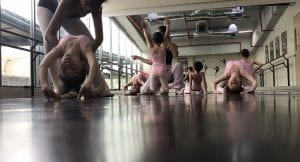Due to the coronavirus case numbers increasing, we have been asked to stay under quarantine for a longer period of time. This has effectively put on hold our CAS activities. However, we were able to find some kinds of solutions to keep ourselves actively involved.
The activities I was participating in, origami and pottery and my service, RDA have been immensely affected. However, at home, I have access to origami paper and am able to create more sea creatures which I am putting together for an origami aquarium. Although I am unable to do pottery or volunteer at the Riding for Disabled centre, I have been able to request our school art department for certain supplies once the circuit breaker period had ended. I was able to ask for supplies such as gouache paint, ink, cardboard and watercolour. These supplies will help me experiment with new styles and genres of art. Apart from watercolour and cardboard, I have never dabbled in creating art pieces with gouache paint or ink. I intend to teach myself these skills in the coming weeks. Although without a mentor to teach me it will be difficult, my goal is to complete at least three art pieces that I will be satisfied with.
Similarly, due to the lockdown, I have been unable to participate in RDA and our current system of creating blogs has not really taken off as we are finding difficulty in writing blogs without learning new skills in the centre. Beyond being a sidewalker, we have been unable to move up to another level. However, once the lockdown ends, I will not only be able to return to RDA but I also intend to take my skill of working with less-abled children forward. While at the RDA I had greatly enjoyed working with the children as it taught me to be patient, understanding and sensitive, especially how these children are not as different from us as they seem. All they want is to just have fun! What I intend to do after, though it might be difficult to join a new group I am not accustomed to, I plan to join the Sarada Kindergarten, Singapore since they have a special program for differently-abled children.
Two other activities that I am really passionate about and would want to lend my voice to are working with animals and migrant workers in Singapore. For the first, I have recently registered as a volunteer at Jurong Bird Park for Singapore’s Wildlife Reserve and received an email saying, that they will get back to me once they can confirm that they can resume volunteer training. This will be a serious challenge for me as it will be fairly technical in learning the behavioural patterns and habitats of these animals. It also requires serious time commitment of 6 months of work, but if I am able to do it, it will be very satisfying and beneficial for me.
There is also an organisation in Singapore called HOME, which works with migrant workers and their rights. While I was always aware of migrant workers, the Coronavirus has really made up sit up and notice them as the deadly pandemic has swept through their dormitories. To aid them, my family and I have donated to Giving.sg.
My family and I have also been closely associated with the Ramakrishna Mission of Singapore which works in providing food and rations to the migrant workers. I have also written to HOME as a volunteer and will be participating in the oncoming awareness talk. 


Additionally for physical activities, I am taking initiative to cycle 3km every day after online school ends so that I can remain physically fit. My goal is to increase the number of kilometres every week.









